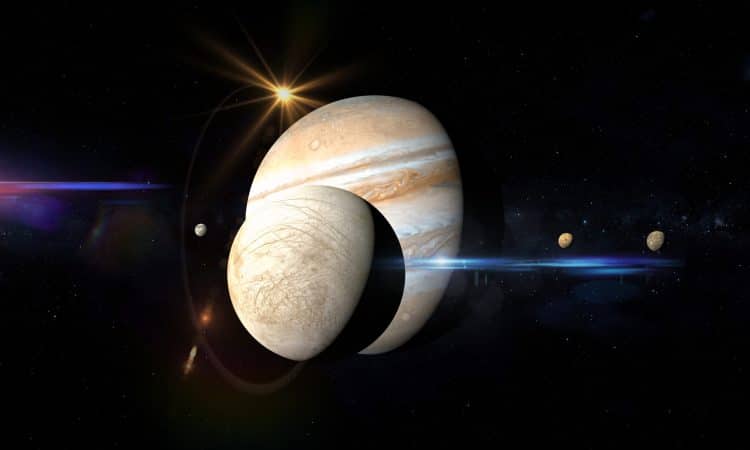
NASA will launch a highly anticipated new mission to Jupiter’s fourth largest moon, Europa. Called the Europa Clipper, the spacecraft will conduct a detailed survey of the moon, looking for potential sites where Europa could host alien life.
The Europa Clipper is NASA’s largest planetary exploration spacecraft ever built: as wide as a basketball court when its solar sails are deployed. It has a mass of about 6,000 kilograms.
The search for life elsewhere than Earth usually focuses on our neighbor Mars, a planet that is technically in the “habitable zone” of the solar system.
But Mars is not an attractive place to live, due to the lack of atmosphere and high levels of radiation. However, Mars is close to Earth, making it relatively easy to send missions to explore it.
But there are other places in the Solar System that could support life – and Saturn, because they have liquid water.
Here on Earth, water is the solvent of life: water dissolves salts and sugars and facilitates the chemical reactions necessary for life on Earth.
Largest planetary exploration craft ever built by NASA
There may be life forms elsewhere that rely on methane or liquid carbon dioxide or whatever, but life as we know it uses water.
The reason there is liquid water so far into the Solar System is that Jupiter and Saturn, the gas giants, exert an immense gravitational pull on their satellites, he writes.
Saturn’s moons Titan and Enceladus are stretched and compressed by gravity as they orbit their host planet. This movement results in vast underground oceans with a surface of solid ice, with plumes of water vapor exploding 9,600 kilometers above the surface.
It is strongly suspected that Europe is in the same situation. Although we know a lot about Europa from more than four centuries of observations, we have not confirmed that it has a liquid ocean beneath the ice like Titan and Enceladus.
But all indications point to yes. Europa has a smooth surface, although it has been hit by many meteorites, suggesting that the surface is young, recently replaced.
It also has a magnetic field, suggesting that, like Earth, inside.
What will Europa Clipper do?
At the surface, Europa is bombarded by high levels of space radiation, concentrated by Jupiter. But at depth, the thick layer of ice could protect life in the subsurface liquid ocean.
This means that it would be difficult for us to find concrete evidence of life without digging deep. But where to look? Through flybys of the frozen moon, where there might be life beneath the ice sheet.
To achieve this, Europa Clipper has nine scientific instruments. These include a wide-angle camera to study geological activity and a thermal imaging system to measure surface texture and detect warmer regions on the surface.
There is also a spectrometer to analyze the chemical composition of the planet’s gases and surface, and to detect possible explosive plumes of water on the surface. The mission also has instruments for mapping the lunar surface.

